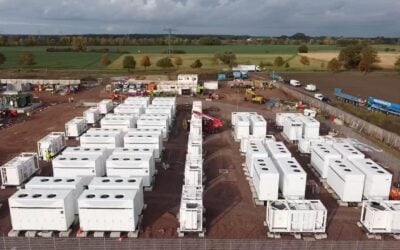
The upstream segment of the US energy storage industry is expecting “more widespread and greater revenue declines” and bigger reductions in employment in the first quarter of 2020 than the downstream, a survey by the national Energy Storage Association (ESA) has found.
Following up on an initial survey in March that found many respondents expected to see significant delays on project execution that the association said could be “immediate and potentially devastating” to the industry, the ESA conducted another one that this time looked at industry revenue and employment expectations.
Almost two-thirds (63%) of the 101 survey respondents expect revenues to decrease, and around half of those expect to see a decrease of 20% or more. Meanwhile, three quarters (75%) did not expect to have to reduce employment – which included contractors. However, most of the remaining 25% that did say employee numbers might have to be reduced believe that up to 20% of their workforce might be affected.
As has been indicated from Energy-Storage.news’ own handful of recent interviews with developers and manufacturers on their COVID-19 impacts, delays and cancellations on the customer side, materials and equipment supply chain and / or logistical delays as well as permitting and approvals hold-ups are the main causes of the potential reductions in revenues and employment. Some agencies such as local authorities in California have sought to streamline the permitting process to allow ‘no touch’ online or virtual permitting measures.
Try Premium for just $1
- Full premium access for the first month at only $1
- Converts to an annual rate after 30 days unless cancelled
- Cancel anytime during the trial period
Premium Benefits
- Expert industry analysis and interviews
- Digital access to PV Tech Power journal
- Exclusive event discounts
Or get the full Premium subscription right away
Or continue reading this article for free
ESA CEO Kelly Speakes-Backman said the association still anticipates year-on-year growth for the industry but that the COVID-19 pandemic “has impacted the energy storage industry tremendously,” including “immediate and significant risks of workforce reductions and economic damage”.
“These delays upend grid reliability and resilience efforts, just as we enter fire and hurricane season, and as states, towns, and utilities are beginning to incorporate energy storage systems as backup power to prevent power system disruptions for critical healthcare facilities.”
Speakes-Backman said the association is asking Congress at the Federal Administration to help “relieve financial stresses on our members and the industry,” representing more than 60,000 workers in the US.
Analyst Daniel Finn-Foley, who heads up Wood Mackenzie Power & Renewables’ energy storage department, said that the firm has assessed there could be a 20% reduction in front-of-meter projects in the US this year and a 32% reduction in projects behind-the-meter compared to Wood Mackenzie’s earlier projections.
“Depending on how significantly project are delayed the impacts of this virus could result in hundreds of millions of dollars worth of capacity moved from 2020 into 2021 or out further towards 2025.”
ESA has set up a resources centre on its website providing additional information on the impact of COVID-19 on the energy storage industry. Meanwhile, its counterpart in Europe, the European Association for Storage of Energy (EASE) is also conducting its own survey which invites responses via its website here. Energy-Storage.news meanwhile is updating news stories on the pandemic’s impacts on the industry on our live blog, continued here.
The survey stats in this article have been amended slightly after ESA issued a corrected version of its original release statement.





